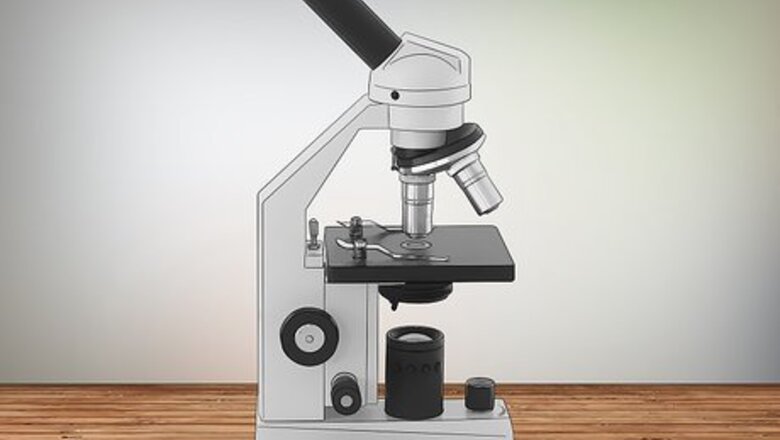
views
Viewing Dust Mites Under a Microscope
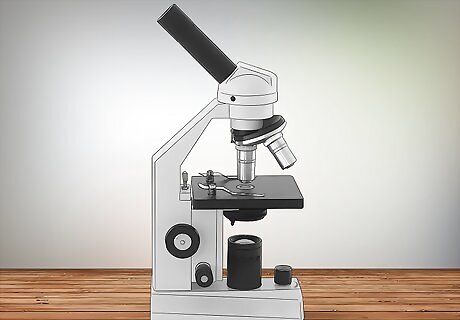
Obtain a compound microscope with 10x magnification. Any microscope will do, but a compound microscope is the best kind for observing microscopic, transparent specimens, such as dust mites. You can buy a compound microscope online or from a retailer that sells them to schools, hospitals, and research organizations. You can also acquire a cheap microscope with a 10x magnification lens from a toy store, hobby store, or thrift store. You need to use at least 10x magnification when viewing dust mites under a microscope.
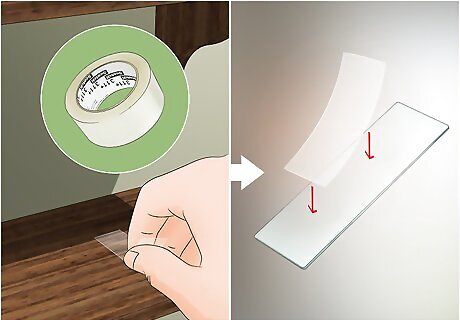
Collect samples of dust and put them on a slide. Using a clear piece of tape, pick up clumps of dust from surfaces such as shelves or the floor. Put the tape on the slide under the lens of the microscope with the power set to at least 10x magnification. Dust mites are 0.3 millimetres (0.012 in) in size, so they can’t be seen with the naked eye. Use a lint-free, microfiber cloth to handle the slide to avoid getting fingerprints on the glass. Carry the slide between your thumb and forefinger by its sides rather than by the top and bottom.
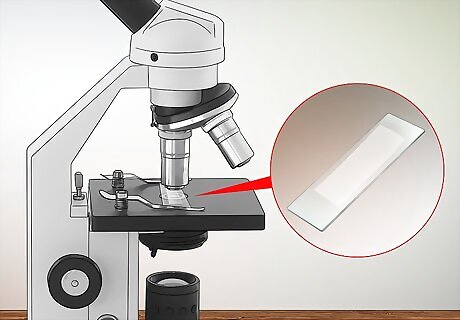
Put the slide under the stage clips. The stage is located at the front of the microscope under the objective lenses. It’s a flat, square platform with metal clips on it for holding slides. Gently lift the clips and close them over each end of the slide to hold it in place. Don’t force the slides under the clips, as they are fragile and can be easily broken.
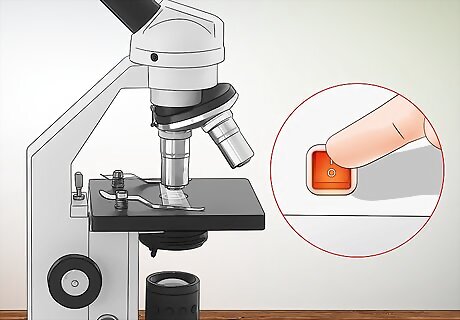
Plug in the microscope to turn on its light. A power switch on the bottom controls the light. Use the dimmer switch by pushing it forward and backward to adjust the lighting. Adjust the light intensity to low with the dimmer switch at the bottom right of the microscope. When you turn the microscope on, increase the light intensity to a level that isn’t too bright or too low. A ring-like object called the diaphragm lets you control the amount of light that reaches the specimen. You can rotate this with your hand to adjust the amount of light under the specimen. It’s located under the stage.
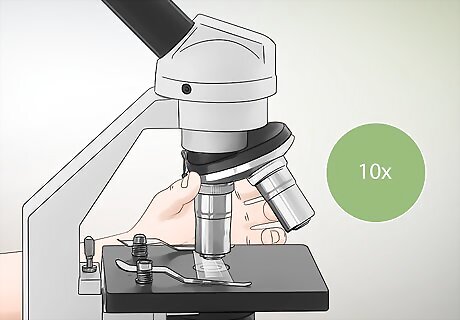
Rotate the nosepiece to the 10x power objective. You can rotate it by simply turning it with your fingers. This is the level at which dust mites can be seen. If the dust mites are still out of focus, increase the power objective until you see them clearly.
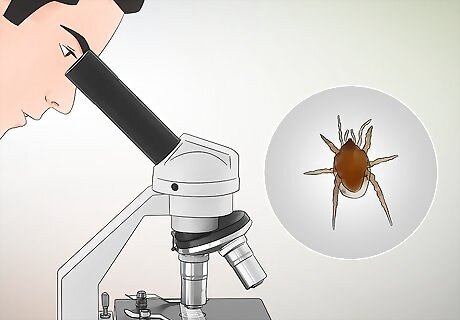
Look for clear, oval-shaped arachnids with rigid bodies. They have long hairs along the edges of their bodies and short hairs all over their bodies. They don’t have eyes or antennae. Under a microscope, you’ll see dust mites crawling all over one another. Dust mites’ mouths resemble heads.
Testing with a Home Dust Mite Test Kit
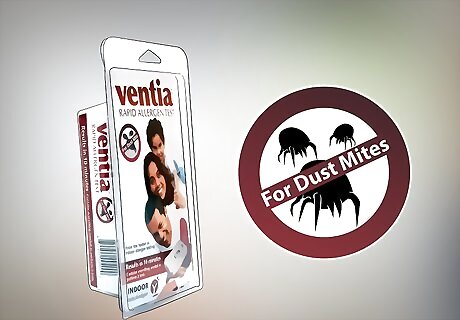
Buy a home dust mite test kit. You can buy a testing kit online. Some testing kits require you to collect the sample and send it to a lab for results. Some kits allow you to test a sample at home yourself using a solution on a test strip. The test strip has line indicators to represent the levels of allergens present in your home. Testing for dust mites is a good idea if all preventive measures have not improved your allergy symptoms.
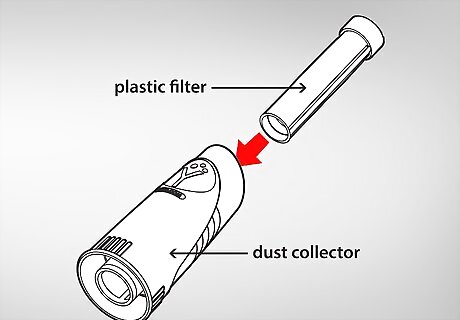
Insert the plastic filter in the dust collector. Dust mite home-testing kits come with a dust collecting container that attaches to a vacuum cleaner’s hose. The filter traps dust samples inside the dust collector while you vacuum. Indoor allergen test kits are useful for testing air quality if you have breathing issues at home.
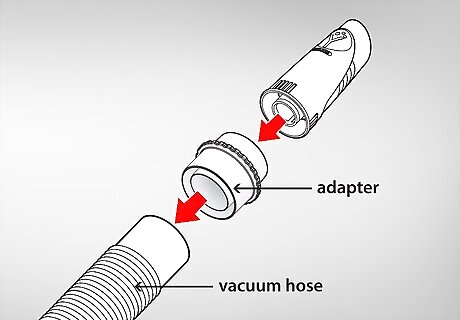
Attach the dust collector to your vacuum hose. If the collector doesn’t fit on the hose, use the adapter that comes with the testing kit. You can attach the adapter to the hose, and then attach the collector to the adapter. To make sure the collector is secure, turn the vacuum on and place your hand over the opening of the nozzle to feel for suction.
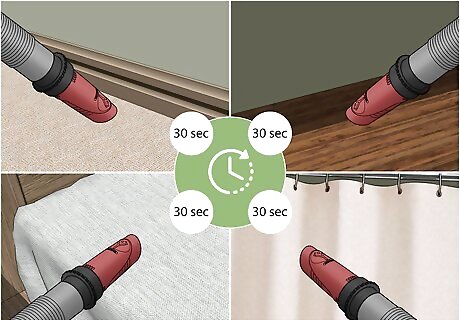
Vacuum 4 separate sections in the spot you’re testing. Each of these 4 areas should be the size of a letter-sized page of paper. Vacuum each section for 30 seconds each to collect an adequate sample of dust to test. This comes to 2 minutes total. You can test carpet, bedding, curtains, dusty shelves, and so on. The heaviest concentration of dust mites can be found in fibers, so carpets and mattresses are the best place to test.
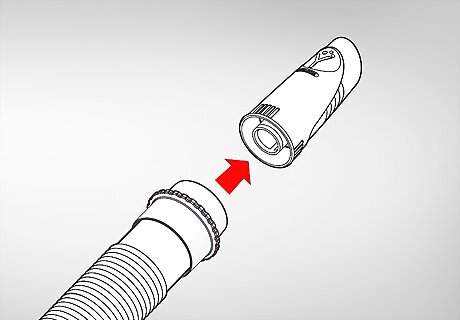
Turn the vacuum off and remove the dust collector. Leave the filter inside the dust collector when you remove it. The filter needs to remain inside, because you’ll be testing it with a solution that comes with the kit. Don’t put your hand down inside the container to touch the filter, especially if you have allergies to dust mites.
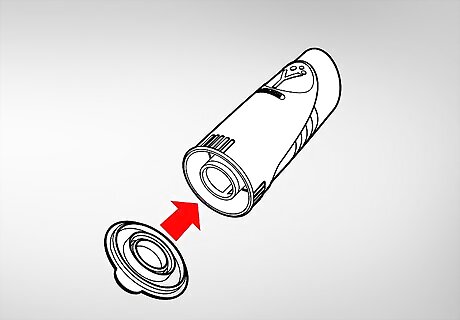
Insert the bottom cap into the base of the collector. These kits come with bottom caps to seal the bottoms of the dust collectors, because you’ll be putting testing fluid in it. The collector serves as a container for the indoor contaminant.
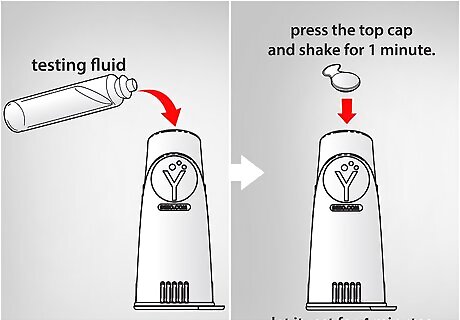
Add the testing liquid, shake the container, then let it rest for 4 minutes. Dust mite testing kits come with testing a solution that you pour directly into the dust collector with the filter inside. The solution mixes with the dust to detect mites. Once the liquid is in the dust collector, press the top cap on the top opening, and shake for 1 minute. Leave the solution and dust to set for 4 minutes. Letting it set allows the dust and solution to blend together, so it will give accurate results on the test strip.
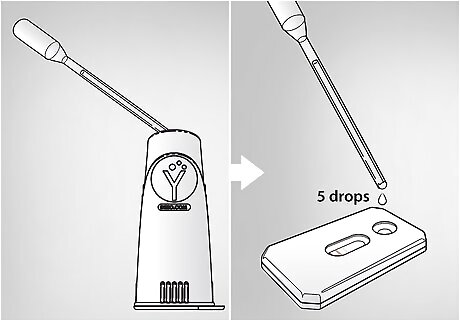
Apply the 5 drops to the sample well on the test strip. Using the dropper that comes in the test kit, suck some of the solution and dust from the collector. It should take 10 minutes for the test strip to show results. Results will appear as pink and red lines on the test strip. The test strip has a C and a T symbol under which the pink lines will appear. C means control, and T means test. The T mark is where the results of the test show up. The control, or C, shows what all the different shades of pink mean.
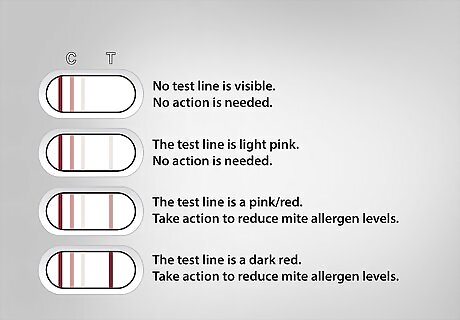
Look at the test strip for pink lines after 10 minutes. A red or pink line will appear under the T mark. Compare the color of that line with the high, medium or low indicators shown under the control, or C, symbol. If the line is pinkish red or dark red, mite levels are medium to high. If the line is light pink or invisible, that means mites are undetectable or very low.
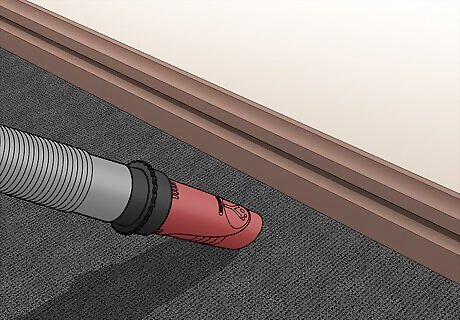
Test other rooms if you have high dust mite levels. The kit will come with 2 tests, so you can use the second one in another room. If you checked a carpet in the living room, check the carpet or sheets in a bedroom. To test other areas, repeat this process with the second kit.
Recognizing Dust Mite Allergy Symptoms
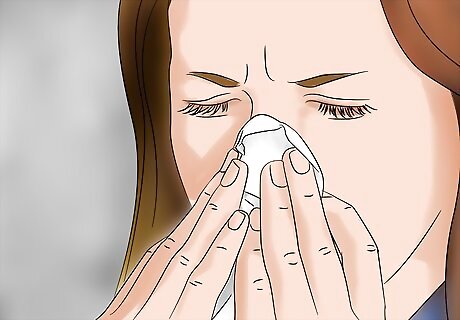
Identify symptoms such as hay fever, cough, runny nose, or sinus pain. Proteins in dust mite feces cause allergic reactions in sensitive individuals. You can react from inhaling them or from contact with your skin. Symptoms may also manifest as watery eyes, asthma, and sneezing. Symptoms in infants can show up as infantile eczema. Children will frequently rub their noses upwards if they’re reacting to dust mites. Other visible symptoms include frequent awakening, postnasal drip, blue-colored skin under the eyes, an itchy nose, roof of mouth, or throat.
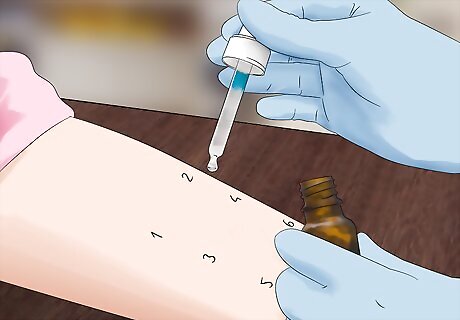
Get a skin prick test to determine your sensitivity to allergens. You can get these tests done at an allergy specialist, but you need a referral from your primary care doctor to see an allergist. When you get a skin prick or scratch test, the nurse will poke or scratch your skin with a tiny needle containing a small sample of an allergen. If you are allergic to dust mites, a small, itchy wheal will appear on the test site. A wheal is a red bump that resembles a mosquito bite or hive. It takes about 20 minutes for wheals to appear after pricking or scratching the skin. The larger the wheal is, the more likely you are to be allergic to the substance.
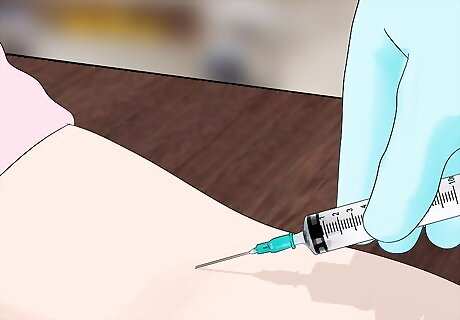
Get a specific IgE blood test if the skin test shows no signs of allergies. If you have allergy symptoms, skin tests won’t always show symptoms, especially if you’re taking allergy medicine. In an IgE test, a nurse will take a sample of your blood, which is sent to a lab for testing. To test the blood, lab technicians will add allergens to it to see if your blood produces antibodies to attack them. They test the amount of antibodies your blood produces to fight the allergens. This will indicate whether you are allergic to dust mites. To get a specific IgE blood test, your doctor will either do it in their office or send you to a lab to have your blood drawn. A positive blood test to an allergen doesn’t mean an allergen caused your symptoms. That’s why you should have a full checkup to rule out anything else.
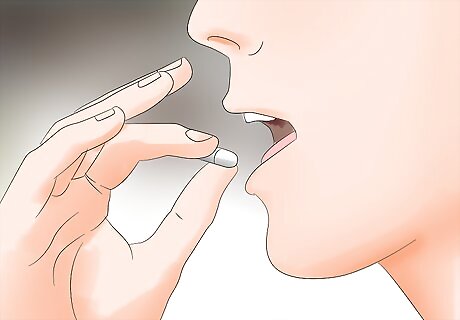
Take antihistamines or corticosteroids to treat allergy symptoms. Over-the-counter antihistamines and intranasal corticosteroids treat dust mite allergies, but these medications act in different ways. For example, corticosteroids treat inflammation in your nose caused by allergens. Antihistamines block histamine to reduce allergy symptoms, and you take them orally. When over-the-counter medicines fail to work, your allergist may recommend immunotherapy to strengthen your immune system against allergens. You can also limit your exposure to dust by regularly vacuuming carpets, washing bedding, using mite-proof covers for your bedding, and washing your clothes weekly. Use a HEPA air filter to clean the air in the bedroom of the allergic individual. Another option is to have just wood flooring throughout your home, rather than carpets. Dust mites prefer fabric over wood or tile.














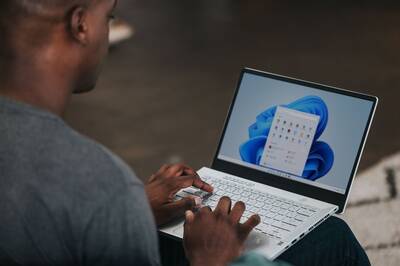





Comments
0 comment